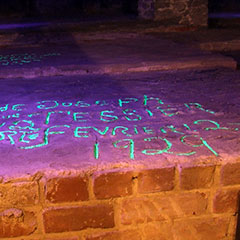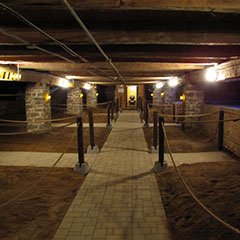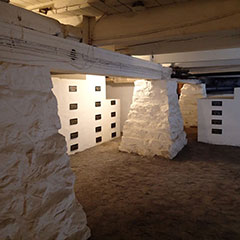November, Month of the Dead
In the Christian liturgical calendar, November is entirely devoted to the deceased. That’s why it is dubbed “Month of the Dead”. Most celebrations occur at the beginning of the month: November 1 st is All Saints’ Day, a tribute to all saints, while November 2 nd is All Souls’ Day, dedicated to praying for the dead. These two holidays are inseparable and are, in fact, very often mixed up. They complete the cycle of three days initiated by Halloween: the eve, the day of, and the day after.
All Saints’ Day
As its name indicates, this holiday celebrates all saints, more specifically the martyrs that were granted eternal life for their sacrifice. It was established by Pope Gregory IV in 837 to replace the martyrs’ celebration his predecessor Boniface IV had set on May 13 th .
For a long time, All Saints’ Day coincided with the termination date of most hired farm labourers, since the harvest ended at that time. An old French saying goes: On All Saints’ Day, all the wheat is sowed and the fruits put away. Another says: Once All Saints’ Day comes, leave your plow. Just as contracts end on All Saints’ Day, it is an important date for settling debts or paying the landlord’s rent.
All Souls’ Day
Fear of death and of the dead is universal to most cultures and people. Some believe the deceased have the ability to intrude on the living to make amends for sins committed when they were alive. It is important to help them escape Purgatory by praying for them. The Church tried to encourage this habit by instituting a specific day to do so.
It is customary to ring the death-knell during the night before All Saints’ Day until the Mass of All Souls on November 2 nd . Groups of ringers roamed the village to encourage people to pray, singing “Wake up sleepers. Pray to God for the deceased!” These rounds also sometimes served as a collection for the souls of the deceased, a tradition that is at the root of Halloween.
The death-knell remains quiet during Mass, attended by all parishioners, then resumes its ringing. Specific prayers are dedicated to all the departed, especially those who died in the last year. All visible ornaments are black, the colour of death in the liturgy. After Mass, people pay a visit to the cemetery or remain at church to carry on with their prayers. The day is spent in meditation.
Although very few people still observe these customs today, many still use this occasion to gather at the grave of a loved one.
The All Souls Auction
The French tradition called “criée pour les âmes” is an auction sale that takes place on the church steps, in favour of the souls of the deceased. In some parishes, such auctions take place on every Sunday in November, while in others there is only one after Mass on All Souls’ Day. Everyone contributes, bringing vegetables, a bag of grain, a chicken, a crafted piece, a sugarloaf, and so on. The money raised by the auction sale is handed over to the priest, who sees to it that Masses are sung for the departed. This custom was in effect in Québec until the middle of the 20 th century.
Funeral March on a Handel Theme
Download video: MP4 , (27,41 MB ), WebM , (28,72 MB ), Ogg (27,86 MB ) (2 minutes 26 seconds)
A lady plays organ music at the Ste-Flore Church in Shawinigan.
Performer: Pauline B. Daneault
in the Ste-Flore Church, Shawinigan, Grand-Mère sector, 2015



